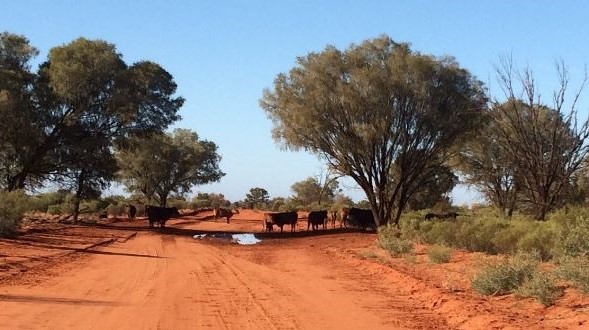News release
From:
Stillbirth and cancer rates are significantly elevated among Aboriginal people living near Ranger uranium mine in the Northern Territory, leading to a call for further research and improved interventions.
Although the mine closed in January 2021, there is work to do to close the gap between health outcomes for Aboriginal people near the mine and other Top End Aboriginal people, writes Flinders University lecturer Dr Rosalie Schultz in the Medical Journal of Australia.
Dr Schultz is a stakeholder through the Public Health Association of Australia and is a lecturer at the Centre for Remote Health, Flinders University.
“In 2014, the NT Chief Health Officer commissioned an investigation into stillbirth and cancer rates in long term Aboriginal residents around the Ranger mine,” Dr Schultz says.
“The investigation aimed to quantify rates and identify exposures that may have contributed to the excess stillbirths and cancers.
“The focus was ionising radiation because this exposure was considered the worst-case scenario. The mine employed few local Aboriginal people, so occupational exposures were not considered.
“Elevated stillbirth and cancer incidence rates among Aboriginal people living near the Ranger mine compared with other Aboriginal people in the Top End were confirmed. Stillbirth was over twice as common and cancer about 50% more common.”
However, the final report of the investigation “found little evidence that the risk factors investigated … were associated with increased risk of cancer in study participants”.
“Despite this statistical conclusion, higher rates of tobacco smoking and alcohol use and poor diets among Aboriginal people in the mine region were highlighted in relation to the excess stillbirths and cancers,” Dr Schultz writes.
“The investigation concluded by recommending that Aboriginal people follow advice about smoking, alcohol and diet.”
Dr Schultz pointed out that the NT Department of Health investigation was designed to consider the impact of the imposition of uranium mining on Aboriginal lands, “as was recommended when the mine was proposed and developed”.
“Development of the Ranger mine entailed nullification of veto rights, disempowering Aboriginal communities and threatening their livelihoods.
“With mining came royalty money, expensive commodities, money-hunger and alcohol.
“Economic development from the mine has increased inequity among Aboriginal people in the region. Inequity may contribute to both stillbirths and cancer, although this would not be detected in a cluster investigation [such as the NT Department of Health investigation].
“Employment and educational opportunities associated with the Ranger mine did not promote socio-economic development of the Aboriginal community; rather, Aboriginal wellbeing deteriorated through people relying on royalty income.
“Aboriginal people’s rights were ignored, and their expertise, authority and lifeways were devalued by the mine.
“Excess stillbirths and cancers may be associated with a web of interrelationships between individuals, communities and wider ecological, sociological and political environments, which a biomedically focused investigation may overlook.”
While acknowledging that the NT Department of Health investigation was “was transparent, detailed and publicly available”, she wrote that “stronger Aboriginal contribution to the investigation’s grounding and methodology may have enhanced two-way intercultural learning”.
“Research from Aboriginal community perspectives that focuses on improving health and wellbeing may lead to possible interventions,” Dr Schultz concludes.
“While the mine is now closed and undergoing rehabilitation, there is an opportunity for further research to better understand and close the gap in health risk exposures and outcomes between Aboriginal people in the region of the mine and other Aboriginal people in the Top End.”
All MJA media releases are open access and can be found at: https://www.mja.com.au/journal/media (Please remember to credit The MJA).
The Medical Journal of Australia is a publication of the Australian Medical Association.
The statements or opinions that are expressed in the MJA reflect the views of the authors and do not represent the official policy of the AMA or the MJA unless that is so stated.
Multimedia




 Australia; SA; NT; ACT
Australia; SA; NT; ACT


